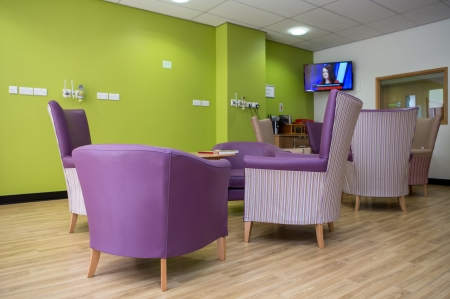This article explores how estates and facilities teams can make the most of their existing building stock through innovative refurbishment projects
It is vital that any programme of work remains flexible, with wriggle room built in to accommodate the outcomes of further project meetings
Few environments present as many challenges to working tradespeople as hospitals. But, like all busy public buildings, hospitals require refurbishments and upgrades on a regular basis to keep wards and corridors safe, functional and visually pleasing, while also adapting to meet the changing needs of patients and staff.
An example of this approach can be seen in the revamp of the fertility unit at Birmingham Women's Hospital.
Led by Novus Property Solutions, the project, which was delivered over a four-week period, involved the full refurbishment of 14 rooms, including the main reception area, all while the unit remained in use.
At the very outset, hospital staff explained the exact expectations of the project and what they hoped would be achieved as a result.
The Novus team then worked with staff on theses aims and suggested some alternative routes to achieving key outcomes with the least disruption as possible.
This was just the first stage and, once complete, the team then met with the head matron on the fertility unit, who was able to outline the most-urgent needs of the staff on the unit and the general public who use it every day.
Gathering information
"This information-gathering stage is key to any hospital project, and the approach to communications with management and key staff members sets the tone for the project and informs the creation of an appropriate programme of work," explains Jason Bowen, contracts manager at Novus Property Solutions.
"However, it is vital that any programme of work remains flexible, with wriggle room built in to accommodate the outcomes of further project meetings."
The importance of the communication between the project team and the head matron cannot be overstated, he added.
"Once the programme of work was put together, including the cost, there followed regular meetings and the programme was continually revised due to the constant changes in the live hospital environment.
"There was no pause in the fertility unit’s activity during any period of the works and, ultimately, if we failed to plan properly for every potential outcome, the risk was a denial of essential treatment to the people who needed it."
Another way in which hospital refurbishments can be managed effectively without the need to close off entire areas for a prolonged period is to adopt a rolling programme of works. In such cases the team will agree to work on just one ward within a unit at a time, leaving the remaining wards live whenever work is being carried out.

Planning is crucial
Bowen said: "Effective planning and continuous project meetings ensured there was never any need for members of the Novus team to come into contact or liaise with the general public. Works were scheduled for the least-busy times of day as far as possible, and whenever work was being carried out the public were informed in advance."
The fertility unit benefits from having two separate entrances, and the work was carefully co-ordinated to ensure that hospital patients and visitors were able to gain access without encountering any dust, noise, or disturbance.
By taking a painstaking approach to planning, and making clear communication the absolute top priority, hospitals and their maintenance firms can mitigate many of the problems that absorb time and value out of a refurbishment project
"By taking a painstaking approach to planning, and by making clear communication the absolute top priority, hospitals and their maintenance firms can mitigate many of the problems that absorb time and value out of a refurbishment project," said Bowen.
"Even in the most sensitive of medical environments, it is possible to deliver outstanding building and decoration works without jeopardising the vital services provided by UK hospitals."
